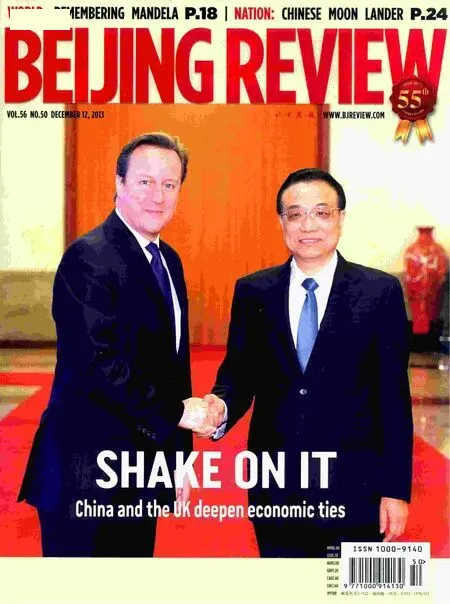An Impression Of China
2013-04-29ByKebedeKassaMamo
By Kebede Kassa Mamo

This was my first trip to China. During my flight to Beijing, I was reading a book entitled General Knowledge of China. The book made me eager to visit places like the Great Wall, the Great Hall of the People, the Birds Nest Stadium, Chinas subway and the Temple of Heaven.
I went to China to take part in the African Political Parties Seminar, which facilitated exchanges between the ruling party and the medias publicity experience, China-Africa Cooperation and the Chinese Dream.
I managed to visit only the Great Wall, however, a structure which was built as a fortification more than 2,000 years ago. Figures say it enjoys around 4 million visitors per year. Tourists flock to the area in groups, pairs or alone. It was not strange to find students, couples in each others arms, seniors with lots of memories and foreigners filled with surprise.
I saw gorgeous girls and boys, conquering the fatigue and fear of climbing, write their names on a lock and attach it on a metallic string alongside the Badaling section. I asked why, and in response they convinced me to do the same for my darling 8,320 km away from China. It was just to show their devotion; symbolizing their enduring love for their partner.
It was not because I lost interest that I did not visit the other sites. It was due to the tight schedule of the seminar. However, though not my original plan, I visited Shaoshan—a place 100 km away from Changsha, capital of central Chinas Hunan Province. The mountainous village, Shaoshan, boasts beautiful scenery, and above all, it is the birthplace of Chairman Mao Zedong—the great helmsman and one of the most important individuals in modern world history.
At the heart of the town is the Mao Zedong Memorial Square, where the bronze statue of the chairman proudly faces his residence. It is placed 183 meters deep inside the square to signify Maos height—183cm.
The great man who was born to a peasant family spent his childhood at the village attending school and helping his family. He spent less than a year in each of the seven schools for he was not satisfied with them. The tour guides told me he was such a fast learner that the teachers could not satisfy his longing for knowledge. Besides, he strongly opposed the way teachers punished students at the time.
I saw the mud brick walls of the Mao family residence and the pool where Mao used to swim. The residence is on a wooded hillside and has 13 rooms. It was by the side of the kitchen fire that Mao used to gather the whole family for meetings. Historical accounts say he encouraged them to devote themselves to the cause of the liberation of the Chinese people.

The museum in Shaoshan encompasses about 6,000 appliances used by the late leader. His military uniforms and size-43 shoe, suitcase and medicine box, gloves and eyeglasses are all kept in safe glass enclosures. Of all what captured my attention was his pajamas. The pajamas he wore for 20 years, when China was on the breadline, had been stitched in 73 places. Asked why he wore old clothes, he once replied,“If ordinary Chinese cannot afford new clothes, how could I?”
Those who experienced Maos leadership, pay tribute to their leader. Parents come with their kids to salute the statue and teach their offspring the trials and tribulations of Maos generation. The youth who know Mao through historical accounts still put wrath under the statue even after 37 years since his death. The queue at nearby shops to buy figurines of Mao signifies the respect of the new generation reserves for him. Hes still held in high regard by Chinese as the savior of the nation.
